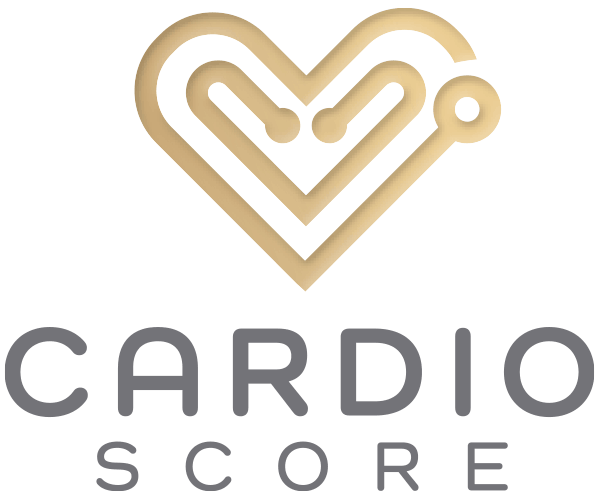CARDIO SCORE
EFFECTIVE EMPLOYEE PREVENTION
FOR
BUSINESSES WITH PROVEN OUTCOMES
RISKS
There are several risks that affect the cardiovascular system and lead to plaque build-up and/or a heart attack/stroke over time. Know your risks by performing the Cardio Score.
MEDICAL SPECIALISTS
The Cardio Score is monitored by specialists in levels II and III. They are from the fields of internal medicine, cardiology and radiology, as well as sports science.
PREVENTION
The goal of Cardio Score is to reduce heart attacks and strokes by over 90%. This can only be done by minimizing the risks at an early stage. Don’t let it get that far!
THE GOAL OF CARDIO SCORE
REDUCED HEART ATTACKS BY OVER 90%!
With 338,001 deaths in 2020, cardiovascular diseases are still the most common causes of death in Germany. 44,529 deaths can be directly linked to acute myocardial infarction.
More than 90% are easily avoidable with early care and efficient prevention!
This does not only apply to the “usual suspects” such as smokers, diabetics, the overweight and older people who are reluctant to exercise. It also applies to young people, competitive athletes or health advocates who believe they are not at risk.The Cardio Score has the potential to reduce the number of fatal and non-fatal heart attacks in participants by over 90%! If there are few and weak risk factors, this will be later and less pronounced. Age itself is therefore an important risk factor!


CHECK ONLINE NOW - GET YOUR CARDIO SCORE!
The CARDIO SCORE shows your employees the personal heart attack and stroke risk over three levels and helps them to reduce it sustainably.
PHASE 1
Evaluates your lifestyle and calculates your basic statistical risk of a heart attack based on 10 questions.
PHASE 2
Evaluates your medical parameters and the current condition of your vessels. The risk is specified in more detail.
PHASE 3
Clarifies whether and to what extent coronary artery disease (CAD) actually exists.
This is only recommended with an increased risk score from phases 1 and 2!
HOW DO YOU REDUCE YOUR PERSONAL RISK OF HEART ATTACK?
Heart attacks occur when the heart muscle is no longer supplied with sufficient blood because one or more of the coronary arteries are narrowed or blocked. Heart attacks are only rarely announced by symptoms (angina pectoris) or changes in the stress ECG and can then be avoided in good time with a heart catheter. In most cases, the heart attack itself is the first sign and about 1/3 of heart attack patients die on the spot!
In order to effectively avoid heart attacks, you need to know what condition your vessels are in and what factors have a positive or negative effect on them!
The coronary vessels themselves can only be shown directly in a heart catheter examination or in a heart CT angiography (computed tomography). However, these examinations do not make sense for everyone, since both require X-rays and contrast media, albeit small ones. In the cardiac catheter examination, there is also the risk of the procedure. Both examinations are therefore not suitable for preventive care without a clear indication and are certainly not suitable for screening examinations. With the Cardio Score levels 1 and 2, you can find out which risk factors put a strain on your blood vessels and how you can reduce them – if possible without medication. You will also learn which factors protect your blood vessels and how you can expand them further. In the case of an increased risk profile, the cardio score provides an important basis for determining the extent to which further diagnostics of the cardio score level 3 (cardiac CT angiography) is required. Ultimately, the Cardio Score should also avoid unnecessary heart catheter examinations.
With your participation…
you will…
- minimize your risk of heart attack,
- increase your life expectancy, performance and Life quality
- help to further improve the cardio score with your results and experiences and
- you can save lives – your own and that of others!
HISTORY
After registration you will find your score results in the dashboard.

